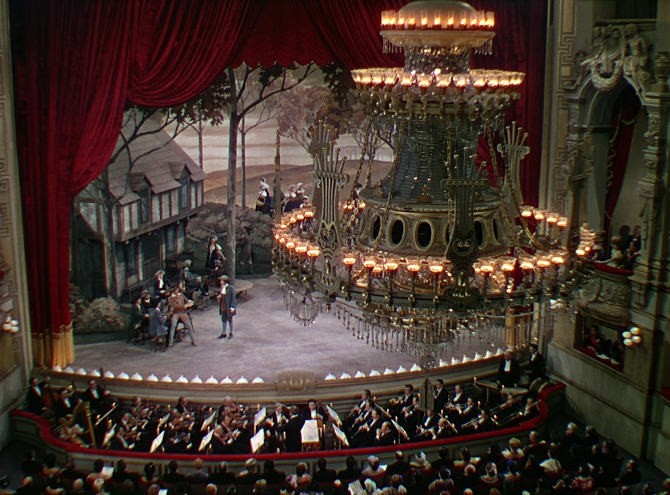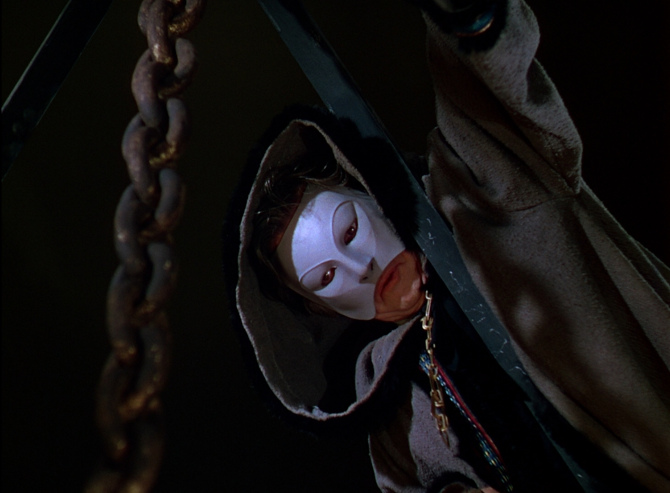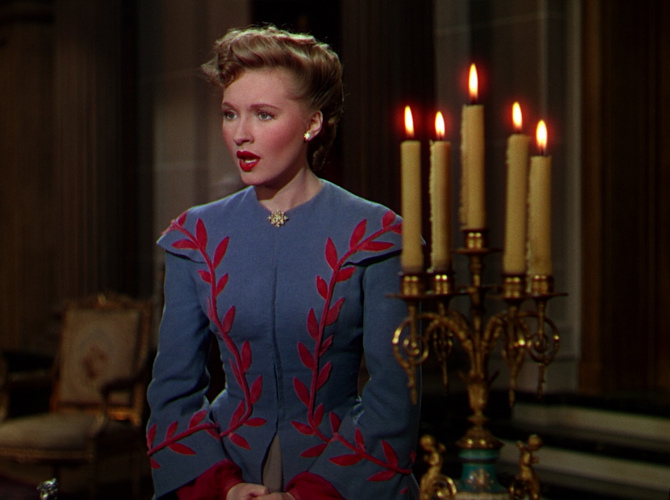Inspector Raoul Daubert: “Be careful. This madman may do anything now.”
Though definitely not the most iconic version of Gaston Leroux’s much loved horror romance novel, 1943’s Phantom of the Opera is opulence personified.
Directed by Arthur Lubin (the man behind so many classic comedies with Abbott and Costello. . . though he had already proven that he could do darker work with Lugosi and Karloff in 1940’s Black Friday), the movie is actually filmed on the set constructed for the legendary Lon Chaney Sr. 1925 version. . . built to be completely identical to the actual Paris Opera House (a true masterpiece of set design).
This version is shot in stunning Technicolor, every single hue popping to create an eye-catching pastiche. Paired with creative cinematography that at times reaches German Expressionism like chiaroscuro lighting (especially when filming the Phantom), this really is a treat to look at. It is then all pieced together with creative crane shots, intriguing static angles and so much more, a technical masterpiece that cannot be denied.
The narrative is a bit less exciting. Heavier on the opera than it is on the horror or romance, young chanteuse Christine DuBois (Susanna Foster) is a background singer and understudy to star Biancarolli (Jane Farrar) at the Paris Opera House. With much upside, she is training with the city’s most renowned voice coach. . . still a bit innocent, she does not realize that all of her lessons are being paid for by aging violinist Erique Claudin (Claude Rains) – who has been nursing an infatuation with the young woman from afar.
When he unceremoniously gets fired for his fingers starting to lose their speed, he quickly becomes destitute (after all, most of his money has been going to her vocal betterment). . . his last hope a concerto he has been writing for years. After a mix up has him thinking that his music has been stolen by the company he is trying to publish with, he attacks and then flees – now facially disfigured and branded a murderer.
Retiring to the catacombs of the Opera House, the embittered and eternally maddened soul steals mask and costume, beginning to dress like a phantom – feeding into the age old story of a red bearded ghost that haunts the ancient locale.
Terrorizing the producers, cast, and audience, it is all in order to get his beloved Christine the starring role (soon turning murderous again). Meanwhile, Christine entertains the fancy of two suitors, the star male singer, Anatole Garron (Nelson Eddy), and Inspector Raoul Daubert (Edgar Barrier) – Lubin’s deft comedic touch comes into effect every time these two are onscreen together.
Filled with melodrama, original operas (World War II made it near impossible to get the rights for classic operas from Europe), and luscious visuals, what the 1943 version lacks in spooks and scares, it makes up for in its Academy Award winning color cinematography and art direction – the only Universal horror classic to ever win a statuette at the Oscars (and it was well deserved).
A worthwhile watch, Phantom of the Opera doesn’t reach the levels of horror that even the silent version did, but thanks to its competent direction, impressive use of Technicolor, unbelievable sets, and excellent performance from Rains (his voice and perfectly coifed hair put to good use), it still wows in many a way. So, take the mask off of this forgotten classic, it’s operatic.




